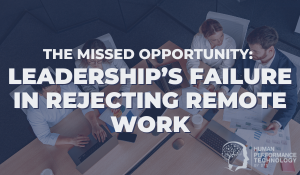Leading Change with a Limited Budget
Can organisational change be achieved without investment? Yes, it is possible. But no, not necessarily in every organisation. Let’s look at how it might be possible for your organisation to achieve change without additional investment.
In this scenario, there are 2 assumptions:
1. No additional investment is made, but leaders and individual contributors are still remunerated in line with their normal package.
2. When ROI is referred to, it is in reference to the aforementioned investment of money and time (but is not indicating any additional investment was made).
Change can happen organically over time, but the reason businesses invest in change management (and management in general) is to realise the return and benefits of the business changes by a certain point in time. Typically, there is a business case where ROI is expected by a point in time, and a project team works to that timeframe to get results. The management of change leads to the intended result at the intended time and is therefore a valuable service. However, this article dives into options for leading change that get the intended result without additional budget.
The Approach
These four considerations can help any professional lead and achieve change with a limited budget.
1. Take a relationship-centric approach. With this step, you would want to consider who has power in the business. Given there is no budget, you will be relying on your relationship(s) with people of influence to create and achieve change. A typical influencer is an executive sponsor or perhaps someone identified as a change champion for the business. Our suggestion is to focus on the sponsor - the person who takes on the role of owning the result of the change program. An Executive Sponsor is an active and visible leader, who champions the proposed changes through support, action and communication. The reason for this is that research points to the sponsor’s role as critical to the success of the change. Through your relationship with the sponsor, you can support and back their efforts at no additional costs and make major headway in achieving change.
2. Identify behaviours first. Most projects revolve around the new technology, product, system or service (for example) in terms of defining the change. With this step, the idea is to define the change in terms of the behaviours you seek and find the right tech solution to enable and support the new ways of working. Essentially, this comes down to a good understanding of the problem and selecting a solution that responds to it. It’s less about defining the change in terms of the solution itself. The reason this saves money (and human resources) is that the program is carving out a path of least resistance. That’s not to say that behavioural change is easy, but rather it is easier when the solution is aligned to the strategy and desired behaviour. Consequently, there is congruence. There is fit. There is less investment in ‘convincing’ with campaigns.
3. Anticipate resistance during the solution design phase. Early in any change effort, it’s important to incorporate a Change and/or Design Specialist, who understands the user (also known as the customer or recipient of change or impacted group). With this step, there is the opportunity to design the solution with the user in mind. By knowing the user, the project team can design a user-friendly solution. The reason this saves money is that the program is reducing resistance, reducing the need for lengthy guides, training and customer support. By making the solution user-friendly, it will reduce the perception of a negative effect of the change, but more pertinent to this article, not incur costs.
4. Identify your “power lever” for adoption. There is a lot of investment that goes into communications, training and testing, tracking and measuring, as well as promotions. These are legitimate efforts by all means, but when a budget is limited and you need to get results, you might go for a more reliable lever with reasonably less effort and cost. This comes down to rewarding the desired behaviour and creating negative consequences for the wrong behaviours. The reason is because one way to achieve behavioural change on a limited budget is to change the scorecard or rewards associated with the change. This works for customers and employees alike as seen by many commercial points and rewards programs through to well-run performance management processes.
In addition to the above, there are a number of free online tools to support collaboration and change efforts that are worth considering on a limited budget. Plus, there are other avenues to consider to reduce costs in the short-term, such as starting with manual processes instead of automated processes or delivering a minimal viable product (MVP); however, the above points are more effective for the long-term. Another option is to refer to team members' DISC reports as a way to support and enable change.
References
Implementation Management Associates. Change Management on a Budget, April 2018.
Prosci. Research on the Role of Executive Sponsors, 2018.

Temre Green, PhD
Head of Consulting Services, Australia & New Zealand. Temre has designed, planned and delivered business strategy and transformation programs that were driven by a range of factors, such as innovation, growth, compliance, regulations, restructures and economic downturns. As an Industrial-Organisational Psychologist, Temre has spent her career dedicated to organisational behaviour and the work environment. She is currently focused on the future of work and multiple areas of organisational development that support organisational growth and health.



We Would Like to Hear From You (0 Comments)